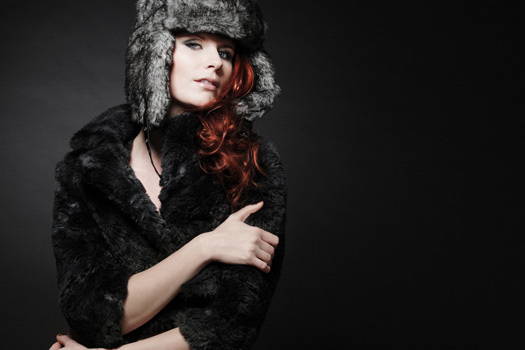 Woman in winter fur, with permission from Shutterstock.
Woman in winter fur, with permission from Shutterstock.
Last night I was half watching New York City's local news when a story about fur caught my eye. At the center of the news segment was a $950 Phillip Lim parka, described on Barneys.com as having a faux fur collar. The coat was recently removed from the site after allegations from the Humane Society that the fur collar was, indeed, real. Though the Phillip Lim brand never specified that the collar was fake, they did concede that the collar was labeled as "real Coyote fur" in Japanese.
As the news segment progressed, an expert, or fur diviner of sorts, approached pedestrians wearing fur trimmed jackets on the streets of Manhattan. One woman in particular had a look of horror on her face when he informed her that not only was her fur hood real, it was made of coyote dog fur. Now it seems that even those of us who choose to go faux aren't doing the right thing.
I don't consider myself a fur activist, but like anyone, I hate feeling ignorant, especially when it comes to my consumption habits. It's difficult enough to research the legality of the manual labor in your clothing, let alone the origins of the materials and fabrics being used. I look with hope to initiatives such as Ecolect's Product Nutrition Label, a Life Cycle Assessment index for materials, based on the standardized USDA nutrition label. Also inspiring is the Ecolizer, a synthesized set of swatches containing data on materials and processes, recently mentioned by John Thackara.
I know that the phrase, "don't ask, don't tell," has been in the news for other reasons, but it's an apt phrase for the current state of the global manufacturing of garments. As long as we aren't asking about the material and contents of our clothing, no one is going to tell us.
